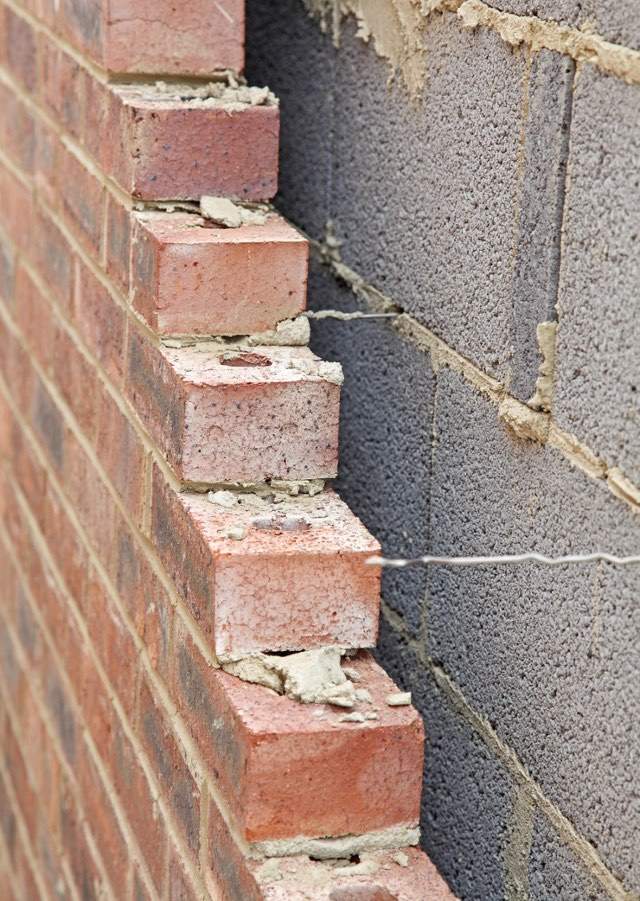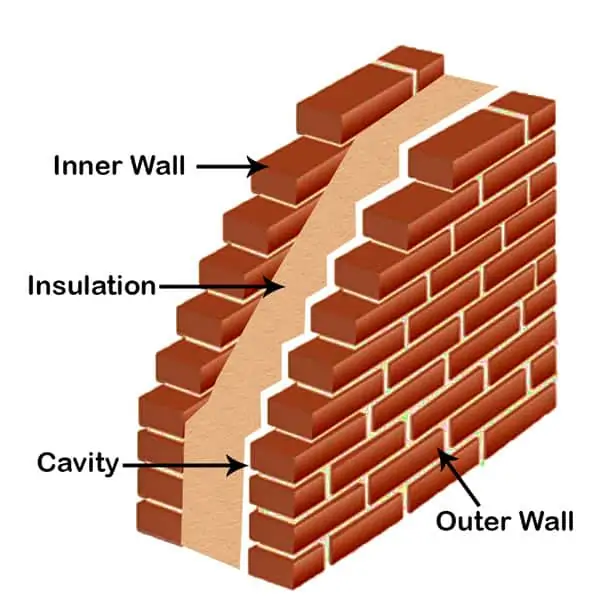What is a cavity wall?,
From the outside, most brick, block, or stone structure walls appear to be one solid piece of construction.
However, often hiding within those walls is a gap,
extending the entire length and height of the wall.
This gap is not an error in the construction of the wall or an oversight.
In fact, these cavity walls (the common term for this type of gapped wall) serve some very important purposes.

What is a cavity wall?
Clearly, a cavity wall is a masonry structure consisting of two separate walls
(called leaves) running parallel to each other.
These walls are commonly known as leaves, and are held together by metal blocks or ties,
and there is a gap between these two walls (usually less than 10 cm or just under 4 inches).
Cavity walls can be load-bearing or not, allowing them to be used anywhere in the structure.
In cases where the cavity wall may carry a load, the inner wall is usually thicker than the other wall.
This allows the inner wall to do most of the work while the outer wall acts more as a facade.
Many ancient masonry structures, whether commercial or residential, used hollow wall construction.
For modern buildings that use this method,
the gap is typically filled with cavity wall insulation made of foam or mineral wool.
This insulation allows the home or building to retain heating or cooling better using modern insulation materials.
Used for cavity walls
Cavity walls are more common on exterior walls,
and the gaps within these walls create a bit of a moisture barrier.
Since the two walls are not touching, moisture is unable to bridge the gap from the outside of the building to the inside.
This makes hollow walls a viable solution for damp areas as solid walls absorb and transport moisture within the space.
Air is actually very good at insulating, as the air-filled space prevents thermal bridging.
In hollow walls, the only thermal bridges available are metal ties or brick ties connecting the two walls.
If the cavity is tightly closed, the air acts as thermal insulation preventing heat loss or gain.
In other cases, designers may specifically request a cavity wall to be able to add insulation between the two shutters.

Advantages and disadvantages of cavity walls
When it comes to stone and brick structures,
hollow walls are still a relatively popular construction method,
and with this construction method come many advantages and some disadvantages.
Advantages of cavity walls
Prevent moisture
The main advantage of a cavity wall is moisture prevention,
without a solid wall to absorb all the moisture from the outer walls and let it in, the inner sheet stays dry.
With a damp-proof course (a row of bricks protected by a waterproof membrane),
hollow walls can provide all the necessary protection from moisture.
thermal insulation
The ability of a cavity wall to insulate better than a solid wall of the same overall thickness is a major advantage.
Trapped air and lack of thermal bridges reduce heat loss in the winter
and help prevent conditioned air from leaving the space in the hotter months.
Sound insulation
As the lack of internal structure between the sheets prevents sound transmission,
this is useful for creating soundproof rooms or preventing excess street
or neighbor noise from reaching the home or office.
Providing materials
Leaving a gap between the two sheets requires less material,
rather than building a wall with a third layer of bricks or using wider blocks,
the gap (combined with metal ties) provides a strong and economical method of construction.

Disadvantages of hollow walls
Experience required for construction
Most framing crews can build a straight wall easily,
but it takes an experienced (and more expensive) builder to build a straight, evenly spaced cavity wall.
This means spending more money on the project and potentially longer periods
of time waiting for a craftsman who can do the job.
Accumulation of sediment and dirt
In older buildings, deposits such as dirt, debris,
flaking mortar and other materials can accumulate in the cavity.
These deposits can allow thermal bridging,
removing one of the biggest benefits of hollow wall construction.
Expensive repairs and modifications
In buildings where some additional insulation is desirable,
property owners should call in experts to drill holes in the cavity walls and fill them with insulation.
Going this route to insulation is more expensive than tearing down drywall for a DIY insulation project.
Another point to consider is that the metal bonds that hold the two sheets together can rust and rot over time.
This is especially true when the exterior wall is exposed to water or exposed to condensation,
causing the brick bonds to rust.
This can create a safety hazard as the leaves can come off and weaken the structure.
See More: Construction guide for using insulated glass






